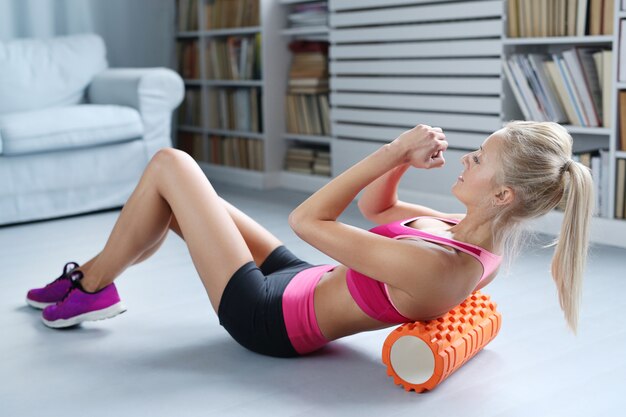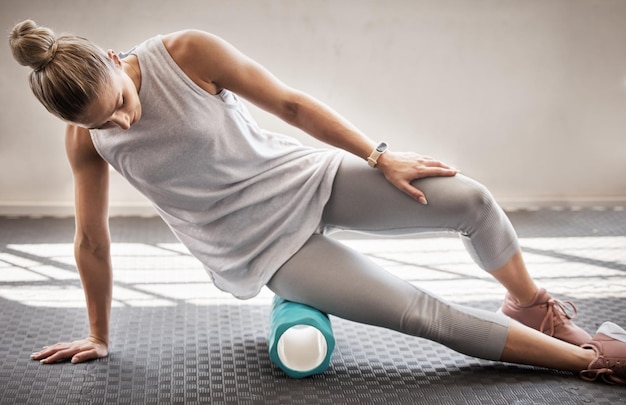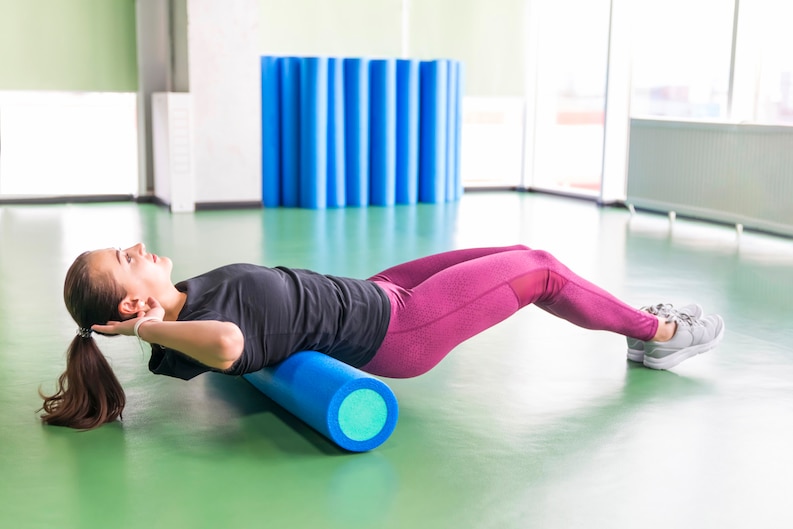Foam rolling, often referred to as self-myofascial release (SMR), has gained popularity in recent years as a simple yet effective technique for improving flexibility, relieving muscle tension, and enhancing overall physical well-being. In this article, we will delve into the world of foam rolling, exploring its numerous benefits and how it can be incorporated into your daily routine to unlock its full potential.
What Is Foam Rolling?

It involves using a cylindrical foam roller to apply pressure to various muscle groups in your body. It’s a form of self-massage that targets fascia, a connective tissue that surrounds muscles, to release tension and improve flexibility. This technique can be performed on various muscle groups, including the legs, back, arms, and neck.
The Benefits of Foam Rolling
1. Improved Flexibility
One of the primary benefits of foam rolling is enhanced flexibility. As you roll over different muscle groups, it helps break up adhesions and knots within the fascia, allowing your muscles to move more freely. This increased range of motion can lead to improved performance in both athletic and everyday activities.
2. Alleviates Muscle Soreness
Foam rolling is an excellent tool for post-workout recovery. It helps reduce muscle soreness and stiffness by increasing blood flow to the targeted areas. This means you can bounce back quicker from intense workouts, making it an essential part of any athlete’s routine.
3. Reduces the Risk of Injuries
Regular foam rolling can also decrease the risk of injuries. By maintaining healthy and flexible fascia, you’re less likely to experience strains, sprains, or tears during physical activities. It acts as a preventive measure, keeping you in the game.
4. Better Posture and Alignment
Using a foam roller can improve your posture and overall body alignment. It targets muscles that often become tight due to prolonged sitting or poor posture, helping you stand taller and feel more balanced.
How to Foam Roll Effectively
Now that we understand the benefits let’s discuss how to foam roll effectively:

1. Choose the Right Roller
There are different types of foam rollers available, ranging from soft to firm. Beginners may prefer a softer roller, while experienced users might opt for a firmer one. It’s essential to choose the right roller for your comfort level and needs.
2. Focus on Specific Areas
Identify the areas in your body that need attention. Common areas include the quadriceps, hamstrings, calves, and upper back. Spend more time rolling over tight or sore spots.
3. Maintain Proper Form
When foam rolling, maintain proper form to ensure maximum effectiveness and safety. Roll slowly and steadily over the muscle, applying steady pressure. Avoid rolling over joints or bones.
4. Breathe and Relax
As you foam roll, remember to breathe deeply and relax your muscles. Tension will hinder the process, so stay as relaxed as possible.
Conclusion
Foam rolling is a valuable addition to your fitness and wellness routine, especially for addressing muscle imbalances. Its benefits, including improved flexibility, reduced muscle soreness, injury prevention, and better posture, make it a versatile and accessible self-care practice. By incorporating foam rolling into your daily life, you can unlock the full range of advantages it offers.
FAQs
It’s recommended to foam roll for about 5-10 minutes on a daily basis, especially after workouts or when feeling muscle tension.
Absolutely! Beginners can start with a softer foam roller and gradually progress to firmer ones as they become more comfortable with the technique.
If you have any serious medical conditions or injuries, it’s advisable to consult with a healthcare professional before incorporating rolling into your routine.
While foam rolling is beneficial, it should complement stretching rather than replace it. Both techniques have unique advantages for muscle health and flexibility.
Aim for about 1-2 minutes on each muscle group, focusing on areas that feel tight or sore. Adjust the time based on your comfort and needs.








